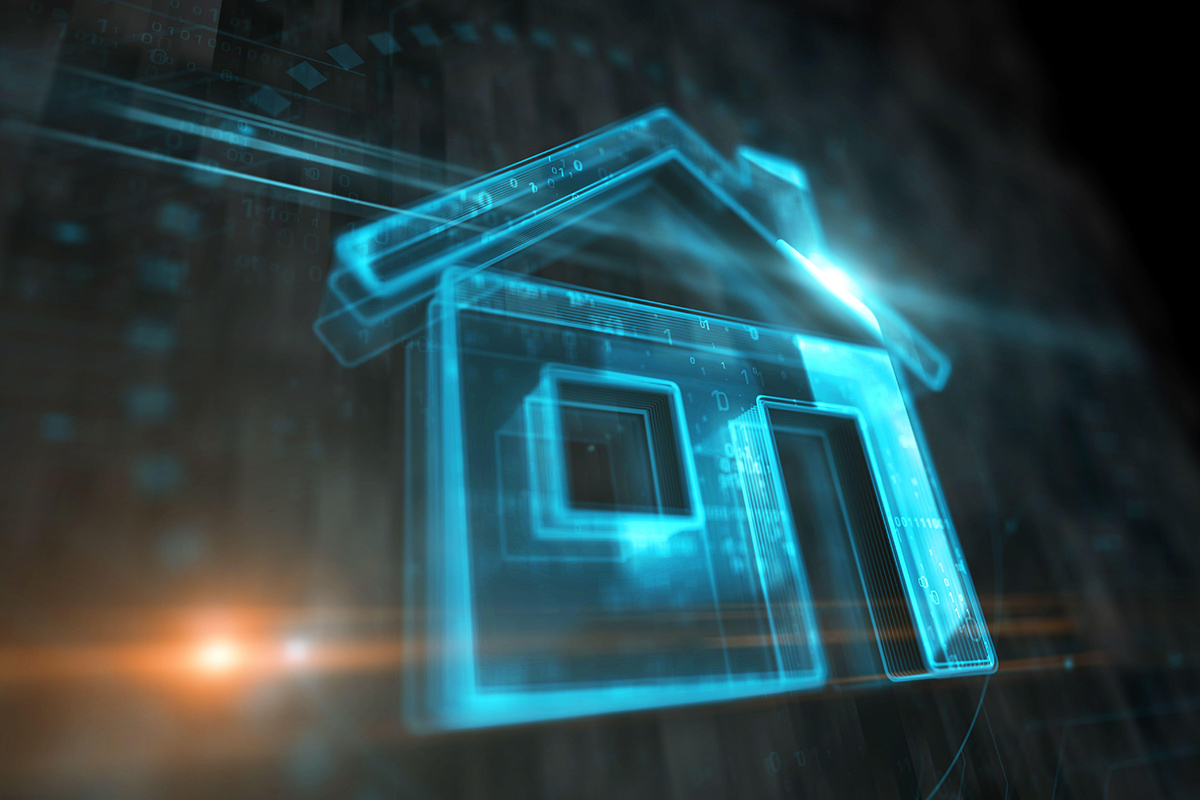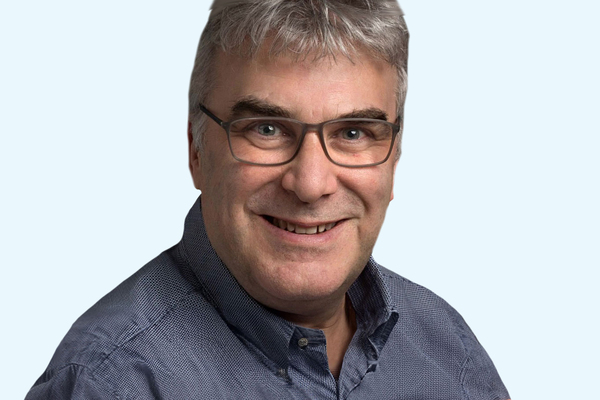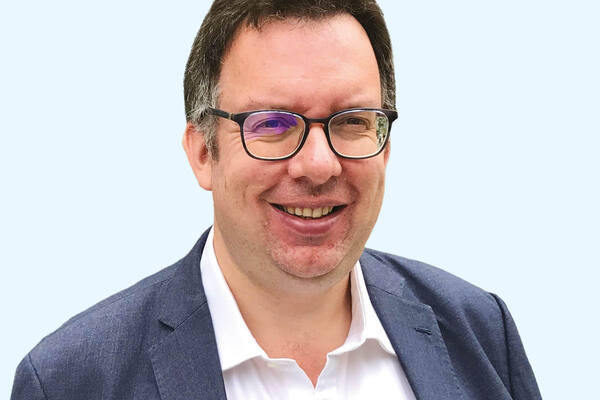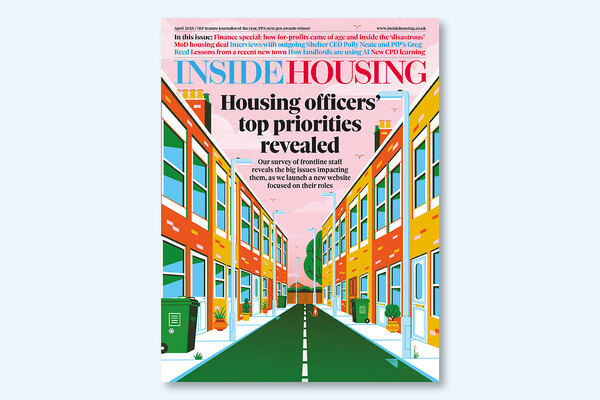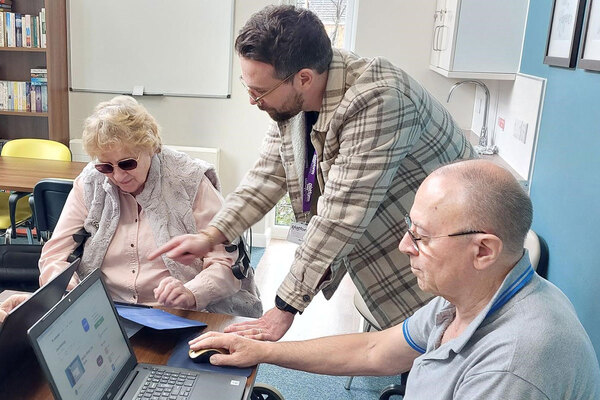Big brother vs nanny state
As more and more landlords use sensors and surveillance technology to monitor the safety of tenants, questions are being raised about whether this data can be abused. Dawn Foster investigates

Source: Lisa Beta
Everywhere we go, data is collected about us. CCTV records each of us 70 times a day on average. Mobile phones track our every move. For the most part, the data is collected benignly and is rarely used without our knowledge.
Buried in the terms and conditions of every Oyster card, Transport for London (TfL), the authority that runs the Tube and bus system in the capital, makes clear that data gleaned from the millions of journeys made on their systems every day may be used for research purpose.
The travel habits of Londoners can be used to assess how often services should run, which stations are busiest and how long the average journey lasts.
But TfL also uses the data to dig deeper into habits and needs. For example, it can examine which routes disabled people are most likely to use, and focus on making the transport system more accessible by targeting their needs.
Similarly, homes that have been fitted with the latest green technology collect data from sensors and internal technologies that can provide information to the landlord on how well those technologies are doing the job, but also on how homes are used by tenants.

Ground-source heating pumps are a particular problem for many tenants
In the housing sector, perhaps the biggest use of sensors currently is in properties that have had energy-efficiency measures installed. By tracking temperatures, how often tenants turn on central heating and on what setting, and hot water usage, landlords can learn about how well a building is working, and what tenants need to learn about the way their home operates after being refurbished.
This means relying on tenant feedback is not the only way to gauge whether an installation of energy-efficient materials and machinery is working.
But it also means that, if necessary, housing associations can target education at tenants who are struggling to adapt their behaviour in the home to the new technology, and check whether the solutions installed are working.
Hot water
Ground-source heating pumps are a particular problem for many tenants. To function properly and efficiently, they must be switched on at all times. For tenants who do not go out to work and are on low incomes, the temptation is to switch off the pump whenever hot water or central heating is not needed.
This uses up more energy and these tenants can find their energy bills rocket, after their landlord convinced them the upheaval and installation would result in a saving.
Orbit undertook research from 2013 with Coventry University to assess the success of new energy-saving measures in some of its 37,000 homes across Britain. It reports little resistance from tenants.
‘Sensors are only installed where customers agree,’ John Barnham, head of sustainable investment tells Inside Housing. ‘If sensors are tampered with, this reflects in data and can be removed if problematic.
‘Otherwise we demonstrate to occupiers the value to them in allowing us to install and, in certain situations, provide incentives for installation.’
Alarm bells
In supported housing too, sensors offer an innovative way to help tenants and alert carers to problems or dangers in the home. Fall monitors and alarms are increasingly used to both help people live as independently as possible, and also ease the burden of over-stretched carers, by relaying information about possible emergencies quickly.
In cases of Alzheimer’s and dementia, technology can prevent harm to a tenant. Heat sensors can sound an alarm if an oven or hob has been left on, tagging can track a vulnerable person who may wander off or leave their home unaccompanied and bedwetting can be detected and managed.
Habinteg, a social housing provider that caters for the complex needs of disabled people, has tested sensors and detecting software to monitor safety and health. This includes bed sensors to check whether an individual has fallen from their bed, or slept in it. If a bed is unoccupied for a period, an alarm is raised with close family or a warden.
Practically, this means vulnerable people living alone are less likely to find themselves without urgent medical attention should they need it.
But on the flipside, a tenant with a bed sensor, who finds themselves a new romantic interest may be forced to have an awkward conversation with an adult child should their bed remain unoccupied for a night.
Habinteg also uses wireless technology to increase security for tenants at home: cameras are installed in the tenant’s front door, and connect to a tablet also provided to tenants for the project. If the doorbell rings, the tenant can see visitors on the tablet and decide whether to answer without having to go to the door. Habinteg installs these technologies with the full consent of tenants.
‘Our research has shown that many tenants are willing to try out new technologies but lack of information about the products and understanding about how exactly they could help tenants maintain independence at home are significant barriers for some,’ Habinteg chief executive, Paul Gamble explains.
‘The project uses existing market technology and our feedback from tenants so far suggests that they are happy with the products and the impacts they are having on their lives. I’m looking forward to seeing the final results next year.’
On camera
One tenant with restricted mobility was particularly keen on the security this gave her.
‘I use the camera several times a day, and especially at night, to see who is at the door before deciding whether to answer it on my intercom,’ Bumni Fadipe, a tenant of Habinteg, says. ‘They don’t know that I am watching them, and that makes me feel safer.’
The Habinteg wireless technology also gives tenants the ability to operate lights and electrical equipment from their tablets, lending supported living some of the wish list functionalities of a sci-fi movie. Motion sensors are positioned throughout the home and connected wirelessly to a central unit and web service that silently notifies a designated person or emergency service if they detect a fall or other dangerous situation
The fall alert system can also collect data to analyse other potential risks, such as not rising from bed, infrequent toilet use or unusual sleeping patterns.
Spying eyes
Technology may not always work to help the tenants. Scanning through tenders, Inside Housing found applications for ‘covert cameras’ in tandem with ‘professional witnesses’
But technology may not always work to help the tenants. Scanning through tenders, Inside Housing found applications for ‘covert cameras’ in tandem with ‘professional witnesses’ - essentially spies - have been put out by councils and housing associations. The main reason for using these services is to deter anti-social behaviour and crime, and gather evidence where it occurs.
But CCTV and monitoring technologies are also used to detect tenancy fraud. Newham Council in east London instituted a system of security at several of its blocks after problems with anti-social behaviour and subletting.
With housing associations under pressure from the government to crack down on tenancy fraud, and the financial loss that results from subletting and false tenancy claims, it is perhaps understandable that some technologies are used to detect offenders. Other tenants may feel themselves under scrutiny at the same time, however.
The Department for Work and Pension’s (DWP) benefit fraud detection team already has the power to request information on individuals they suspect of fraudulent claims from utility companies.
It can also request data from landlords on the occupancy of a home. This could include CCTV footage and key fob data.
A higher-than-average gas bill, or a sharp increase of water may signal that more than one person lives in a property. Similarly, a lull in a household’s energy usage during working hours may suggest the tenant is working while claiming jobseeker’s allowance.
These are some of the ways in which your home belies your circumstances and can produce a body of evidence against you if you are accused of wrongdoing.
The DWP’s benefit fraud detection team uses a complex and futuristic array of technology to catch out people claiming benefits under false pretences. As well as stationing undercover detectives outside individuals’ homes, potential workplaces and gyms, they often wear cameras hidden in rucksack straps, hats or water bottles.
After secret filming by BBC’s Panorama programme revealed abuse against older people, care home company HC-One considered installing CCTV cameras in every room of its homes, in consultation with the Clinical Quality Commission. Families of some of the victims of abuse welcomed the idea, and felt it would prevent abuse.
Others were more wary. The installation of CCTV cameras in an individual’s bedroom is a huge invasion of privacy. The fact that the idea was floated purely for older, very vulnerable people also raises questions over how we see older people - whether illness and dementia make people less ‘whole’ and therefore easier to deny rights to privacy and free movement the general public enjoy.
Article 8 of the Universal Declaration of Human Rights upholds an individual’s ‘right to respect for the home, which includes a right not to have one’s home life interfered with, including by unlawful surveillance, unlawful entry, arbitrary evictions etc’.
It is difficult to see how installing a CCTV camera in an individual’s room doesn’t breach this. But the loose definition of surveillance could also breach this right, if data collected from a tenant’s home, on their habits or behaviour, is used in any way other than that which they have consented to and are aware of.
Turning the tables
Occasionally though, people learn to ‘game’ their digital masters. Dr David Good, a professor of psychology at Cambridge University, tells Inside Housing of one such example, from research by a company who wished to remain anonymous:
‘They installed sensors in the homes of older persons who were living on their own. These sensors would discern regularity in movement patterns, and then when there was any significant deviation from that pattern, an alert would be sent by the system to a nominated person, usually an adult child, who would then give their parent a call to check if all was well.
‘A very common pattern in the elderly is the need to urinate in the night. When the target doesn’t do this, the system notices and sends an alert to the son or daughter.
‘After a while, the researchers noticed that many more alerts were being sent than expected. On investigation, they discovered that a number of the elderly men had started keeping a urine bottle by the bed as they appreciated the additional calls their behaviour could generate.’
Much of this technology is still in the early stages of development, and far from being economically viable as a mainstay in social housing. But the sensitivities around the technology show that there is a fine line but protecting and helping tenants, and jeopardising their privacy.
How Orbit gathered data
What sort of sensors were used in the home, and what did they measure?
Wireless sensors are small and unintrusive and can be placed throughout home with data sent to central source. Data sent to a central (remote) point helps reduce inconvenience to customers by not having to visit/collect data on regular basis.
The sensors collected data such as internal/external temperature, humidity, carbon dioxide, volatile organic compounds (VOCs) and light (lux) levels. This means that we can compare temperatures to gauge if a home is at a reasonable (18-21 degrees Celsius) temperature, humidity is at ‘acceptable levels’ (high could mean mould and condensation are possible) and carbon dioxide is below 600 parts per million and therefore well above health implications.
VOCs, if above permissible levels, can have health implications – more pertinent in new homes where ‘modern’ materials are used.
Light can be measured to see if lights are used extensively when compared with natural light levels – this impacts upon energy costs. When used collectively the data can provide real insight into how occupiers are living and how their behaviour and needs can be influencing health and well-being, financial security etc.
It also highlights the ‘health’ of the building, which will have a possible impact upon maintenance costs.
How did the data gathered help Orbit to help tenants?
Data is recorded and sent every five minutes, around the clock. This provides the opportunity to respond immediately where trigger points are activated or prepare a more realistic education and advice programme with the occupants.
This is undertaken in conjunction with understanding their needs based upon occupant numbers, age band, health and financial issues.
It is also used where new technology is installed (eg: heat pumps) to gauge correct operating by occupiers and intervention requirements from Orbit.


